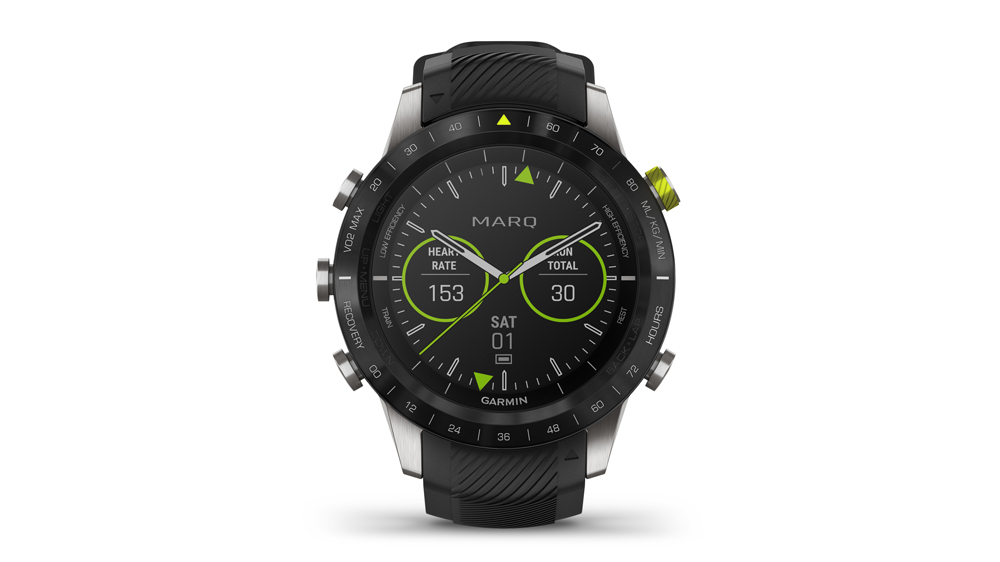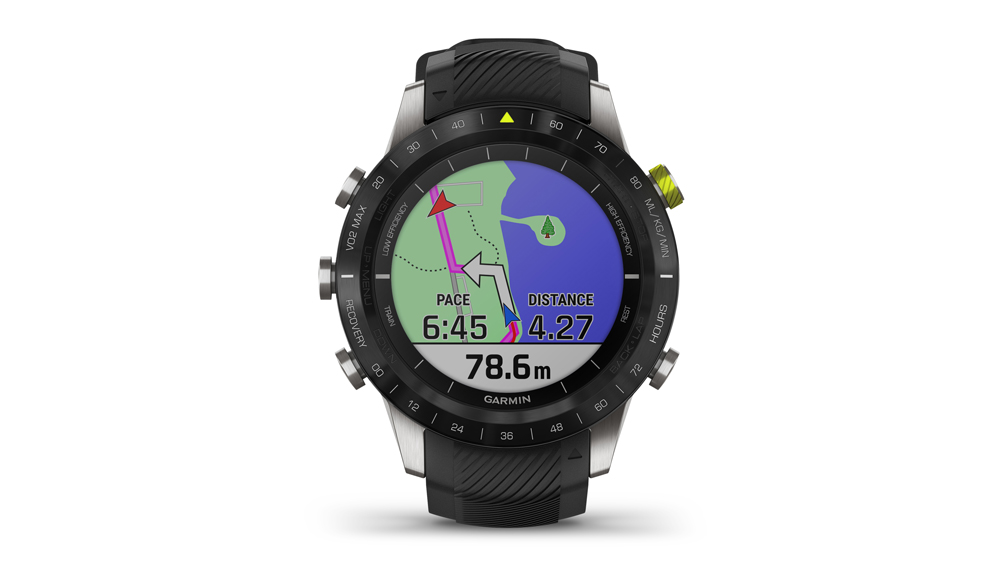You can trust Coach
What would make you spend £1,400 on a fitness watch? You’d need some exceptional features for one and an outstanding design for another. But while the Garmin Marq Athlete has both, I still can’t justify spending £1,400 on it, largely because Garmin offers other almost equally brilliant watches for just over £500.
The appeal of the watch starts with its design, which is the finest Garmin has produced. It’s chunky, but reasonably lightweight for its size; it’s sporty, but classy enough that it won’t raise any eyebrows in the City – or only raise the right kind of eyebrows, at any rate.

One part of the design that undermines its premium feel is the screen, which is exactly the same as that on the Garmin Fenix 5 Plus Series (£599.99), the Forerunner 945 (£519.99) and even the Forerunner 245, which costs just £249.99. The screen is clear and readable even in bright sunlight, and I have no real problem with it, but it’s nothing like as nice to look at as the vivid screen on the best fitness smartwatches like the Apple Watch or Samsung Galaxy Active.
The choice of screen no doubt increases the battery life of the Marq Athlete, but frankly for £1,400 I want a nicer screen and great battery life. I want miracles, more or less. And if I can’t get them then at least give me a better screen than one from a watch that costs £1,150 less.
On the bezel of the Marq Athlete you can see your current VO2 max and recommended recovery time, which is a nice touch, even if I’m not sure everyone wants to display their VO2 max to the world, or convinced by how useful it is to have that info available at a glance.

When it comes to features the Marq Athlete has everything – top-notch sports tracking and training analysis, music storage and the ability to sync with streaming services including Spotify, and colour maps that you can use to plan routes on the fly.

The training analysis is particularly impressive, breaking down your past four weeks of workouts into three categories – anaerobic, aerobic high and aerobic low – and telling you what you need to focus on to balance your training.

The watch can also gauge how well you’re adjusting to heat or altitude using a PulseOx sensor, which is otherwise mostly useless at the moment, though it might provide more detailed sleep tracking insights in the future.
There is nothing better than the Marq Athlete features-wise, then, but it does have an equal – the Garmin Forerunner 945, which has all the training analysis features on the Marq Athlete, plus music and maps, but packed into a lightweight, plastic frame. It might not look as smart as the Marq Athlete, but it’s an awful lot cheaper and still pretty smart.
The Forerunner 945 even has a slightly longer battery life than the Marq Athlete, at 36 hours of GPS or ten hours of GPS plus music, compared with 28 hours of GPS or nine of GPS plus music. That said, the battery life of the Marq Athlete is impressive, and you can comfortably get through a week of training regularly without having to plug it in.
Aside from slightly disappointing screen, I can’t really fault the Marq Athlete. It has a terrific design and, alongside the Forerunner 945, the best set of sports tracking features. The problem is that you can get almost all of that on much cheaper watches. The Garmin Fenix 5 Plus Series are pretty good-looking themselves, and while they don’t have all of the training analysis on the Marq Athlete, they do have music, maps and brilliant sports tracking, while the Forerunner 945 will attract any runners and triathletes who want all the features but don’t care so much about the looks of their watch.
In short, the Marq Athlete is terrific, but not terrific enough to justify its price given what else is available.

Nick Harris-Fry is a journalist who has been covering health and fitness since 2015. Nick is an avid runner, covering 70-110km a week, which gives him ample opportunity to test a wide range of running shoes and running gear. He is also the chief tester for fitness trackers and running watches, treadmills and exercise bikes, and workout headphones.



